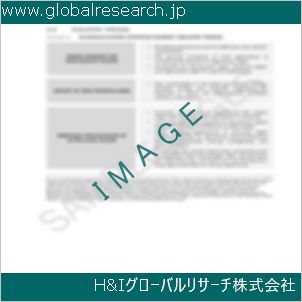1 Automotive Type IV Hydrogen Storage Cylinders Market Overview
1.1 Product Definition
1.2 Automotive Type IV Hydrogen Storage Cylinders Segment by Type
1.2.1 Global Automotive Type IV Hydrogen Storage Cylinders Market Value Growth Rate Analysis by Type 2022 VS 2029
1.2.2 35MPa
1.2.3 70MPa
1.3 Automotive Type IV Hydrogen Storage Cylinders Segment by Application
1.3.1 Global Automotive Type IV Hydrogen Storage Cylinders Market Value Growth Rate Analysis by Application: 2022 VS 2029
1.3.2 Passenger Cars
1.3.3 Commercial Vehicles
1.4 Global Market Growth Prospects
1.4.1 Global Automotive Type IV Hydrogen Storage Cylinders Production Value Estimates and Forecasts (2018-2029)
1.4.2 Global Automotive Type IV Hydrogen Storage Cylinders Production Capacity Estimates and Forecasts (2018-2029)
1.4.3 Global Automotive Type IV Hydrogen Storage Cylinders Production Estimates and Forecasts (2018-2029)
1.4.4 Global Automotive Type IV Hydrogen Storage Cylinders Market Average Price Estimates and Forecasts (2018-2029)
1.5 Assumptions and Limitations
2 Market Competition by Manufacturers
2.1 Global Automotive Type IV Hydrogen Storage Cylinders Production Market Share by Manufacturers (2018-2023)
2.2 Global Automotive Type IV Hydrogen Storage Cylinders Production Value Market Share by Manufacturers (2018-2023)
2.3 Global Key Players of Automotive Type IV Hydrogen Storage Cylinders, Industry Ranking, 2021 VS 2022 VS 2023
2.4 Global Automotive Type IV Hydrogen Storage Cylinders Market Share by Company Type (Tier 1, Tier 2 and Tier 3)
2.5 Global Automotive Type IV Hydrogen Storage Cylinders Average Price by Manufacturers (2018-2023)
2.6 Global Key Manufacturers of Automotive Type IV Hydrogen Storage Cylinders, Manufacturing Base Distribution and Headquarters
2.7 Global Key Manufacturers of Automotive Type IV Hydrogen Storage Cylinders, Product Offered and Application
2.8 Global Key Manufacturers of Automotive Type IV Hydrogen Storage Cylinders, Date of Enter into This Industry
2.9 Automotive Type IV Hydrogen Storage Cylinders Market Competitive Situation and Trends
2.9.1 Automotive Type IV Hydrogen Storage Cylinders Market Concentration Rate
2.9.2 Global 5 and 10 Largest Automotive Type IV Hydrogen Storage Cylinders Players Market Share by Revenue
2.10 Mergers & Acquisitions, Expansion
3 Automotive Type IV Hydrogen Storage Cylinders Production by Region
3.1 Global Automotive Type IV Hydrogen Storage Cylinders Production Value Estimates and Forecasts by Region: 2018 VS 2022 VS 2029
3.2 Global Automotive Type IV Hydrogen Storage Cylinders Production Value by Region (2018-2029)
3.2.1 Global Automotive Type IV Hydrogen Storage Cylinders Production Value Market Share by Region (2018-2023)
3.2.2 Global Forecasted Production Value of Automotive Type IV Hydrogen Storage Cylinders by Region (2024-2029)
3.3 Global Automotive Type IV Hydrogen Storage Cylinders Production Estimates and Forecasts by Region: 2018 VS 2022 VS 2029
3.4 Global Automotive Type IV Hydrogen Storage Cylinders Production by Region (2018-2029)
3.4.1 Global Automotive Type IV Hydrogen Storage Cylinders Production Market Share by Region (2018-2023)
3.4.2 Global Forecasted Production of Automotive Type IV Hydrogen Storage Cylinders by Region (2024-2029)
3.5 Global Automotive Type IV Hydrogen Storage Cylinders Market Price Analysis by Region (2018-2023)
3.6 Global Automotive Type IV Hydrogen Storage Cylinders Production and Value, Year-over-Year Growth
3.6.1 North America Automotive Type IV Hydrogen Storage Cylinders Production Value Estimates and Forecasts (2018-2029)
3.6.2 Europe Automotive Type IV Hydrogen Storage Cylinders Production Value Estimates and Forecasts (2018-2029)
3.6.3 China Automotive Type IV Hydrogen Storage Cylinders Production Value Estimates and Forecasts (2018-2029)
3.6.4 Japan Automotive Type IV Hydrogen Storage Cylinders Production Value Estimates and Forecasts (2018-2029)
4 Automotive Type IV Hydrogen Storage Cylinders Consumption by Region
4.1 Global Automotive Type IV Hydrogen Storage Cylinders Consumption Estimates and Forecasts by Region: 2018 VS 2022 VS 2029
4.2 Global Automotive Type IV Hydrogen Storage Cylinders Consumption by Region (2018-2029)
4.2.1 Global Automotive Type IV Hydrogen Storage Cylinders Consumption by Region (2018-2023)
4.2.2 Global Automotive Type IV Hydrogen Storage Cylinders Forecasted Consumption by Region (2024-2029)
4.3 North America
4.3.1 North America Automotive Type IV Hydrogen Storage Cylinders Consumption Growth Rate by Country: 2018 VS 2022 VS 2029
4.3.2 North America Automotive Type IV Hydrogen Storage Cylinders Consumption by Country (2018-2029)
4.3.3 United States
4.3.4 Canada
4.4 Europe
4.4.1 Europe Automotive Type IV Hydrogen Storage Cylinders Consumption Growth Rate by Country: 2018 VS 2022 VS 2029
4.4.2 Europe Automotive Type IV Hydrogen Storage Cylinders Consumption by Country (2018-2029)
4.4.3 Germany
4.4.4 France
4.4.5 U.K.
4.4.6 Italy
4.4.7 Russia
4.5 Asia Pacific
4.5.1 Asia Pacific Automotive Type IV Hydrogen Storage Cylinders Consumption Growth Rate by Region: 2018 VS 2022 VS 2029
4.5.2 Asia Pacific Automotive Type IV Hydrogen Storage Cylinders Consumption by Region (2018-2029)
4.5.3 China
4.5.4 Japan
4.5.5 South Korea
4.5.6 China Taiwan
4.5.7 Southeast Asia
4.5.8 India
4.6 Latin America, Middle East & Africa
4.6.1 Latin America, Middle East & Africa Automotive Type IV Hydrogen Storage Cylinders Consumption Growth Rate by Country: 2018 VS 2022 VS 2029
4.6.2 Latin America, Middle East & Africa Automotive Type IV Hydrogen Storage Cylinders Consumption by Country (2018-2029)
4.6.3 Mexico
4.6.4 Brazil
4.6.5 Turkey
5 Segment by Type
5.1 Global Automotive Type IV Hydrogen Storage Cylinders Production by Type (2018-2029)
5.1.1 Global Automotive Type IV Hydrogen Storage Cylinders Production by Type (2018-2023)
5.1.2 Global Automotive Type IV Hydrogen Storage Cylinders Production by Type (2024-2029)
5.1.3 Global Automotive Type IV Hydrogen Storage Cylinders Production Market Share by Type (2018-2029)
5.2 Global Automotive Type IV Hydrogen Storage Cylinders Production Value by Type (2018-2029)
5.2.1 Global Automotive Type IV Hydrogen Storage Cylinders Production Value by Type (2018-2023)
5.2.2 Global Automotive Type IV Hydrogen Storage Cylinders Production Value by Type (2024-2029)
5.2.3 Global Automotive Type IV Hydrogen Storage Cylinders Production Value Market Share by Type (2018-2029)
5.3 Global Automotive Type IV Hydrogen Storage Cylinders Price by Type (2018-2029)
6 Segment by Application
6.1 Global Automotive Type IV Hydrogen Storage Cylinders Production by Application (2018-2029)
6.1.1 Global Automotive Type IV Hydrogen Storage Cylinders Production by Application (2018-2023)
6.1.2 Global Automotive Type IV Hydrogen Storage Cylinders Production by Application (2024-2029)
6.1.3 Global Automotive Type IV Hydrogen Storage Cylinders Production Market Share by Application (2018-2029)
6.2 Global Automotive Type IV Hydrogen Storage Cylinders Production Value by Application (2018-2029)
6.2.1 Global Automotive Type IV Hydrogen Storage Cylinders Production Value by Application (2018-2023)
6.2.2 Global Automotive Type IV Hydrogen Storage Cylinders Production Value by Application (2024-2029)
6.2.3 Global Automotive Type IV Hydrogen Storage Cylinders Production Value Market Share by Application (2018-2029)
6.3 Global Automotive Type IV Hydrogen Storage Cylinders Price by Application (2018-2029)
7 Key Companies Profiled
7.1 Quantum Fuel Systems
7.1.1 Quantum Fuel Systems Automotive Type IV Hydrogen Storage Cylinders Corporation Information
7.1.2 Quantum Fuel Systems Automotive Type IV Hydrogen Storage Cylinders Product Portfolio
7.1.3 Quantum Fuel Systems Automotive Type IV Hydrogen Storage Cylinders Production, Value, Price and Gross Margin (2018-2023)
7.1.4 Quantum Fuel Systems Main Business and Markets Served
7.1.5 Quantum Fuel Systems Recent Developments/Updates
7.2 Luxfer
7.2.1 Luxfer Automotive Type IV Hydrogen Storage Cylinders Corporation Information
7.2.2 Luxfer Automotive Type IV Hydrogen Storage Cylinders Product Portfolio
7.2.3 Luxfer Automotive Type IV Hydrogen Storage Cylinders Production, Value, Price and Gross Margin (2018-2023)
7.2.4 Luxfer Main Business and Markets Served
7.2.5 Luxfer Recent Developments/Updates
7.3 Hexagon
7.3.1 Hexagon Automotive Type IV Hydrogen Storage Cylinders Corporation Information
7.3.2 Hexagon Automotive Type IV Hydrogen Storage Cylinders Product Portfolio
7.3.3 Hexagon Automotive Type IV Hydrogen Storage Cylinders Production, Value, Price and Gross Margin (2018-2023)
7.3.4 Hexagon Main Business and Markets Served
7.3.5 Hexagon Recent Developments/Updates
7.4 NPROXX
7.4.1 NPROXX Automotive Type IV Hydrogen Storage Cylinders Corporation Information
7.4.2 NPROXX Automotive Type IV Hydrogen Storage Cylinders Product Portfolio
7.4.3 NPROXX Automotive Type IV Hydrogen Storage Cylinders Production, Value, Price and Gross Margin (2018-2023)
7.4.4 NPROXX Main Business and Markets Served
7.4.5 NPROXX Recent Developments/Updates
7.5 Faurecia CLD Safety Technology
7.5.1 Faurecia CLD Safety Technology Automotive Type IV Hydrogen Storage Cylinders Corporation Information
7.5.2 Faurecia CLD Safety Technology Automotive Type IV Hydrogen Storage Cylinders Product Portfolio
7.5.3 Faurecia CLD Safety Technology Automotive Type IV Hydrogen Storage Cylinders Production, Value, Price and Gross Margin (2018-2023)
7.5.4 Faurecia CLD Safety Technology Main Business and Markets Served
7.5.5 Faurecia CLD Safety Technology Recent Developments/Updates
7.6 Steelhead Composites
7.6.1 Steelhead Composites Automotive Type IV Hydrogen Storage Cylinders Corporation Information
7.6.2 Steelhead Composites Automotive Type IV Hydrogen Storage Cylinders Product Portfolio
7.6.3 Steelhead Composites Automotive Type IV Hydrogen Storage Cylinders Production, Value, Price and Gross Margin (2018-2023)
7.6.4 Steelhead Composites Main Business and Markets Served
7.6.5 Steelhead Composites Recent Developments/Updates
7.7 ILJIN Composites
7.7.1 ILJIN Composites Automotive Type IV Hydrogen Storage Cylinders Corporation Information
7.7.2 ILJIN Composites Automotive Type IV Hydrogen Storage Cylinders Product Portfolio
7.7.3 ILJIN Composites Automotive Type IV Hydrogen Storage Cylinders Production, Value, Price and Gross Margin (2018-2023)
7.7.4 ILJIN Composites Main Business and Markets Served
7.7.5 ILJIN Composites Recent Developments/Updates
7.8 Toyota
7.8.1 Toyota Automotive Type IV Hydrogen Storage Cylinders Corporation Information
7.8.2 Toyota Automotive Type IV Hydrogen Storage Cylinders Product Portfolio
7.8.3 Toyota Automotive Type IV Hydrogen Storage Cylinders Production, Value, Price and Gross Margin (2018-2023)
7.8.4 Toyota Main Business and Markets Served
7.7.5 Toyota Recent Developments/Updates
8 Industry Chain and Sales Channels Analysis
8.1 Automotive Type IV Hydrogen Storage Cylinders Industry Chain Analysis
8.2 Automotive Type IV Hydrogen Storage Cylinders Key Raw Materials
8.2.1 Key Raw Materials
8.2.2 Raw Materials Key Suppliers
8.3 Automotive Type IV Hydrogen Storage Cylinders Production Mode & Process
8.4 Automotive Type IV Hydrogen Storage Cylinders Sales and Marketing
8.4.1 Automotive Type IV Hydrogen Storage Cylinders Sales Channels
8.4.2 Automotive Type IV Hydrogen Storage Cylinders Distributors
8.5 Automotive Type IV Hydrogen Storage Cylinders Customers
9 Automotive Type IV Hydrogen Storage Cylinders Market Dynamics
9.1 Automotive Type IV Hydrogen Storage Cylinders Industry Trends
9.2 Automotive Type IV Hydrogen Storage Cylinders Market Drivers
9.3 Automotive Type IV Hydrogen Storage Cylinders Market Challenges
9.4 Automotive Type IV Hydrogen Storage Cylinders Market Restraints
10 Research Finding and Conclusion
11 Methodology and Data Source
11.1 Methodology/Research Approach
11.1.1 Research Programs/Design
11.1.2 Market Size Estimation
11.1.3 Market Breakdown and Data Triangulation
11.2 Data Source
11.2.1 Secondary Sources
11.2.2 Primary Sources
11.3 Author List
11.4 Disclaimer
| ※参考情報 自動車用IV型水素貯蔵ボンベは、水素燃料電池車両やその他の水素エネルギー利用システムにおいて、水素を安全かつ効率的に保存するための重要な装置です。このボンベは、特に軽量で高圧に耐えるように設計されており、水素を最大限の密度で貯蔵できる特性があります。以下では、IV型水素貯蔵ボンベの概念や特徴、種類、用途、関連技術について詳しく説明いたします。 まず、IV型水素貯蔵ボンベの定義について説明します。このボンベは、主に繊維強化プラスチック(FRP)を使用した複合材料で作られており、内部には高圧の水素を保持するための金属容器(通常はアルミニウムまたはスチール)が配置されています。IV型は、ボンベの設計や製造工程において、既存の他のタイプ(例えばI型、II型、III型)と区別され、特に優れた性能を提供します。IV型は高圧環境でも非常に軽量であり、重量対容量の比率が優れていることから、航空宇宙や自動車分野で広く利用されています。 次に、IV型水素貯蔵ボンベの特徴について考察します。このボンベは、まず第一に高圧貯蔵能力が際立っています。通常、IV型ボンベは350バール(約5,000 psi)から700バール(約10,000 psi)以上の圧力に耐えられる設計がされており、これにより水素を高密度で貯蔵することが可能です。また、FRP素材により、軽量である一方、非常に強固な構造を持っているため、衝撃や振動に対する耐性も高いです。さらに、耐熱性や耐腐食性にも優れており、長期間の使用にも適しています。 種類について言及すると、IV型水素貯蔵ボンベにはいくつかのバリエーションがあります。一般的なものとしては、ボンベの形状やサイズ、使用される材料の違いに基づく分類があり、たとえば異なる強化素材を用いたボンベや、特定の用途に最適化された設計のボンベなどが存在します。また、ボンベのサイズは、自動車の設計や使用される水素燃料電池のタイプに応じて異なり、小型車用のコンパクトなモデルから、バスやトラックなど大型車両用の大型モデルまで多岐にわたります。 IV型水素貯蔵ボンベの用途は幅広く、特に水素燃料電池自動車(FCEV)での利用が目立ちます。水素を動力源とするこれらの自動車は、排出ガスゼロで走行できるため、環境負荷の低減が期待されています。また、バスや大型トラックなどの商用車両でも使われており、長距離運行や重い荷物の運搬に適した性能を提供しています。さらに、発電所や産業用施設でのバックアップ電源としても使用され、水素エネルギーの未来を支える重要な役割を果たしています。 関連技術については、IV型水素貯蔵ボンベは水素利用技術と密接に関連しています。たとえば、ボンベの設計や製造には高度な材料工学や構造解析が必要であり、これにはコンピュータシミュレーションやフィnite element method (FEM)が使用されます。また、水素の貯蔵と供給に関連する技術も進化しており、ボンベの充填・排出にかかる時間を短縮する方式や、利用効率を高めるための新しい制御システムの開発が進められています。 さらに、最近の動向としては、水素の生成・輸送・貯蔵・利用の一連のプロセスを統合する水素エコシステムの構築が進められており、IV型水素貯蔵ボンベはこの重要な部分を担う役割を果たしています。水素の製造方法も多様化しており、再生可能エネルギーからの水素生成(グリーン水素)が注目されています。IV型ボンベは、このような新たな水素供給モデルにも適応できるように進化しています。 それに加え、燃料電池車両の普及に伴い、安全性基準や規制も強化されており、IV型水素貯蔵ボンベの設計はこれらに適合する必要があります。安全性の確保は水素を扱う上で極めて重要であり、ボンベの耐圧試験や漏洩試験が厳格に行われています。 最後に、私たちの未来においてIV型水素貯蔵ボンベは、水素社会の実現に向けた重要な要素として、さらに注目を集めていくことでしょう。環境問題に対する意識の高まりとともに、持続可能なエネルギー源としての水素の利用はますます重要になります。IV型水素貯蔵ボンベの技術革新は、これからの自動車産業の革命を遂げる要素として、重要な役割を果たしていくことでしょう。 |
❖ 免責事項 ❖
http://www.globalresearch.jp/disclaimer


-gr.jpg)









